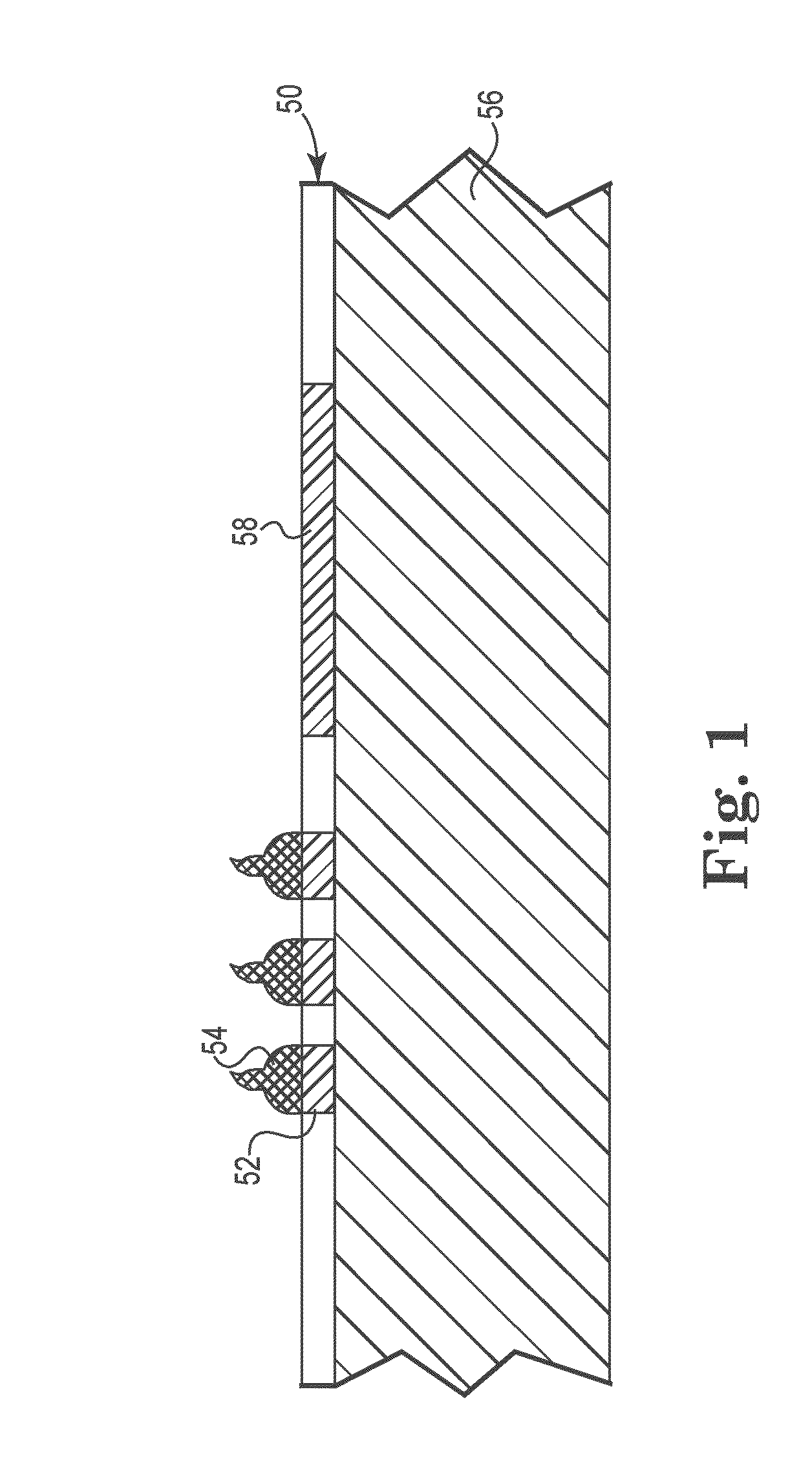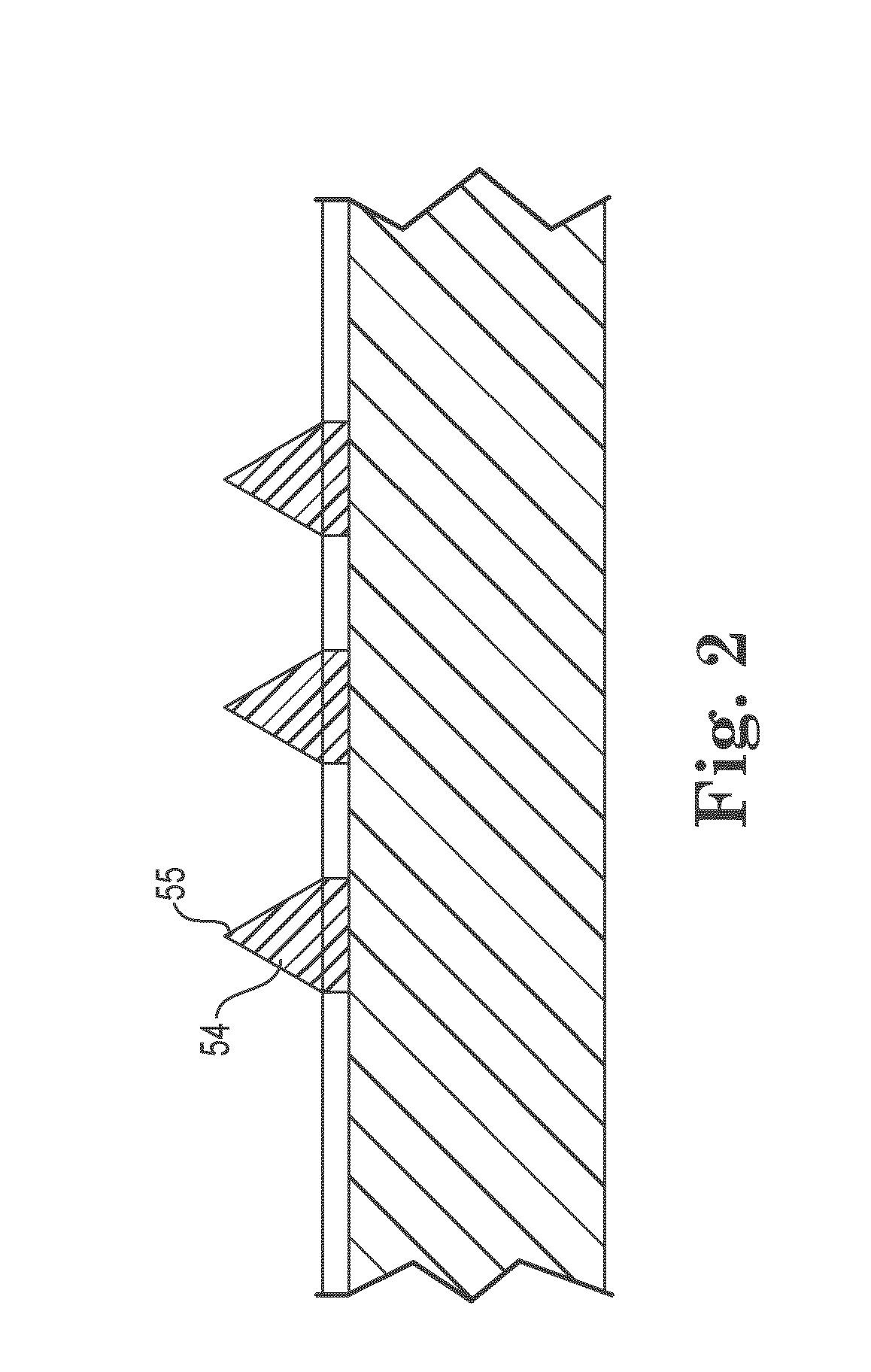Bumped semiconductor wafer or die level electrical interconnect
a semiconductor wafer or die level, electrical interconnection technology, applied in the direction of electronic circuit testing, measurement devices, instruments, etc., can solve the problems of reducing the electrical performance of the connection, affecting the self-heating effect of the contact, and the probe is usually more expensive, so as to achieve the effect of improving the electrical performan
- Summary
- Abstract
- Description
- Claims
- Application Information
AI Technical Summary
Benefits of technology
Problems solved by technology
Method used
Image
Examples
Embodiment Construction
[0052]The present disclosure relates to a high performance probe assembly for testing wafer-level integrated circuits. The present probe assembly can be used with electrical devices having contact-to-contact spacing (pitch) on the order of less than about 1.0 millimeter (1×10−3 meters), and more preferably a pitch of less than about 0.7 millimeter, and most preferably a pitch of less than about 0.4 millimeter. Such fine pitch probe assemblies are especially useful for probing wafer-level integrated circuits.
[0053]FIG. 1 illustrates a probe assembly 50 that leverages the principle of stud bumping in accordance with an embodiment of the present disclosure. Stud bumping is a derivation of wire bonding, both of which have been used for many years in the semiconductor packaging industry. In recent years, the cost of gold has driven a migration to the use of copper bonding wire in an effort to reduce cost.
[0054]Substrate 56 is positioned appropriately within the bond area and stud bumps 5...
PUM
 Login to View More
Login to View More Abstract
Description
Claims
Application Information
 Login to View More
Login to View More - R&D
- Intellectual Property
- Life Sciences
- Materials
- Tech Scout
- Unparalleled Data Quality
- Higher Quality Content
- 60% Fewer Hallucinations
Browse by: Latest US Patents, China's latest patents, Technical Efficacy Thesaurus, Application Domain, Technology Topic, Popular Technical Reports.
© 2025 PatSnap. All rights reserved.Legal|Privacy policy|Modern Slavery Act Transparency Statement|Sitemap|About US| Contact US: help@patsnap.com



